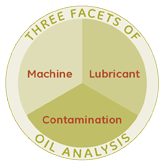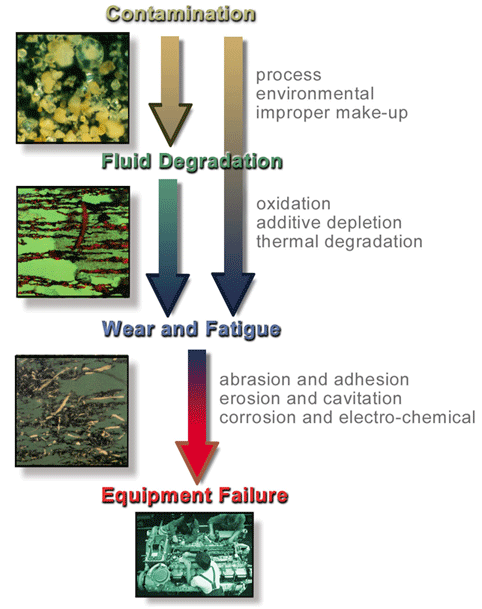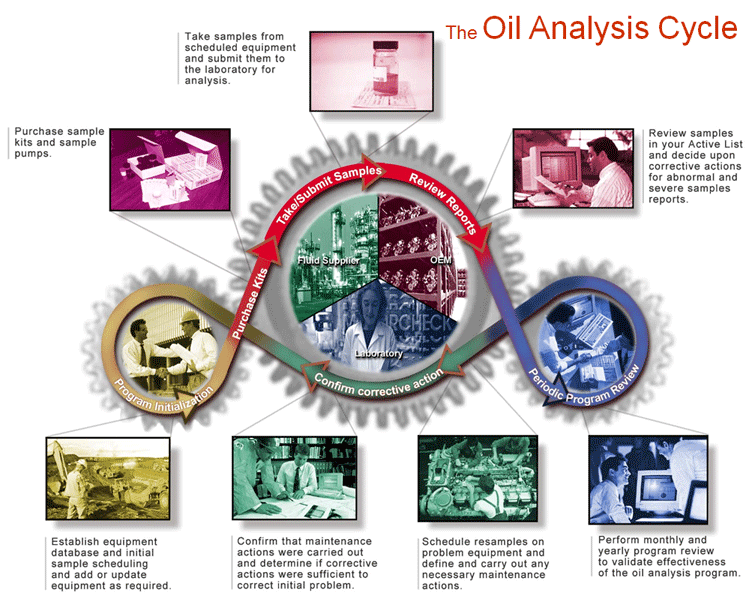Oil Analysis: What is it? Why do it?
 |
|
Overview and History of Oil Analysis When you go for a medical checkup, a blood sample is usually taken and the results help the doctor determine if there are any problems with vital organs. Similarly, because oil is the lifeblood of machinery, analysis can help detect a developing problem in the oil-wetted path of a machine. Oil analysis has been used for at least fifty years for measuring the wear condition of machinery. The railroad industry discovered that the metals found in a sample of used oil revealed the condition of the wearing parts in the diesel engine. Likewise, oil analysis has been a mainstay in the military for monitoring the wear condition of aircraft jet engines and gearboxes. Heavy industry, however, was slower to appreciate the valuable insights that only oil analysis could bring to the predictive maintenance field. |
|
Quality Parameters
|
Blood Analysis
|
Oil Analysis
|
| Fluid Condition | Serum Biochemistry Tests, Full Blood Count Tests | Spectrochemical Analysis (Additives), Viscosity, Oxidation, Acid/Base Number, Moisture Tests |
| Contamination Condition | Cholesterol & Lipids Tests | Oxidation, Nitration, Sulfation Viscosity, Solids/Sludge Content, Particle Counts |
| Component Condition | Thyroid Function Tests, Liver Function Tests | Spectrochemical Analysis (Wear Metals), Wear Debris Analysis, Particle Counting, Acidity Tests |
Today, oil analysis is beginning to take its place alongside vibration monitoring as an indispensable and valuable element of industrial predictive maintenance.
|
Three Facets of Oil Analysis:
|
 |
The Role of Oil Analysis
|
Predictive Maintenance
|
|
Proactive Maintenance
|
Equipment Failure Cycle
Ingress of contaminants and other oil contamination increases rate of fluid degradation. Contamination and poor fluid quality cause increased wear. Eventual equipment failure is inevitable.
Oil analysis detects contamination and fluid degradation before these conditions cause equipment failure!

An Effectively Managed Oil Analysis Program Will:
- Provide effective maintenance scheduling
- Minimize unscheduled downtime
- Extend equipment life
- Reduce maintenance costs
- Minimize installation errors
- Verify warranty and service claims
- Determine optimum oil drain intervals (ODI)
- Improve equipment reliability



